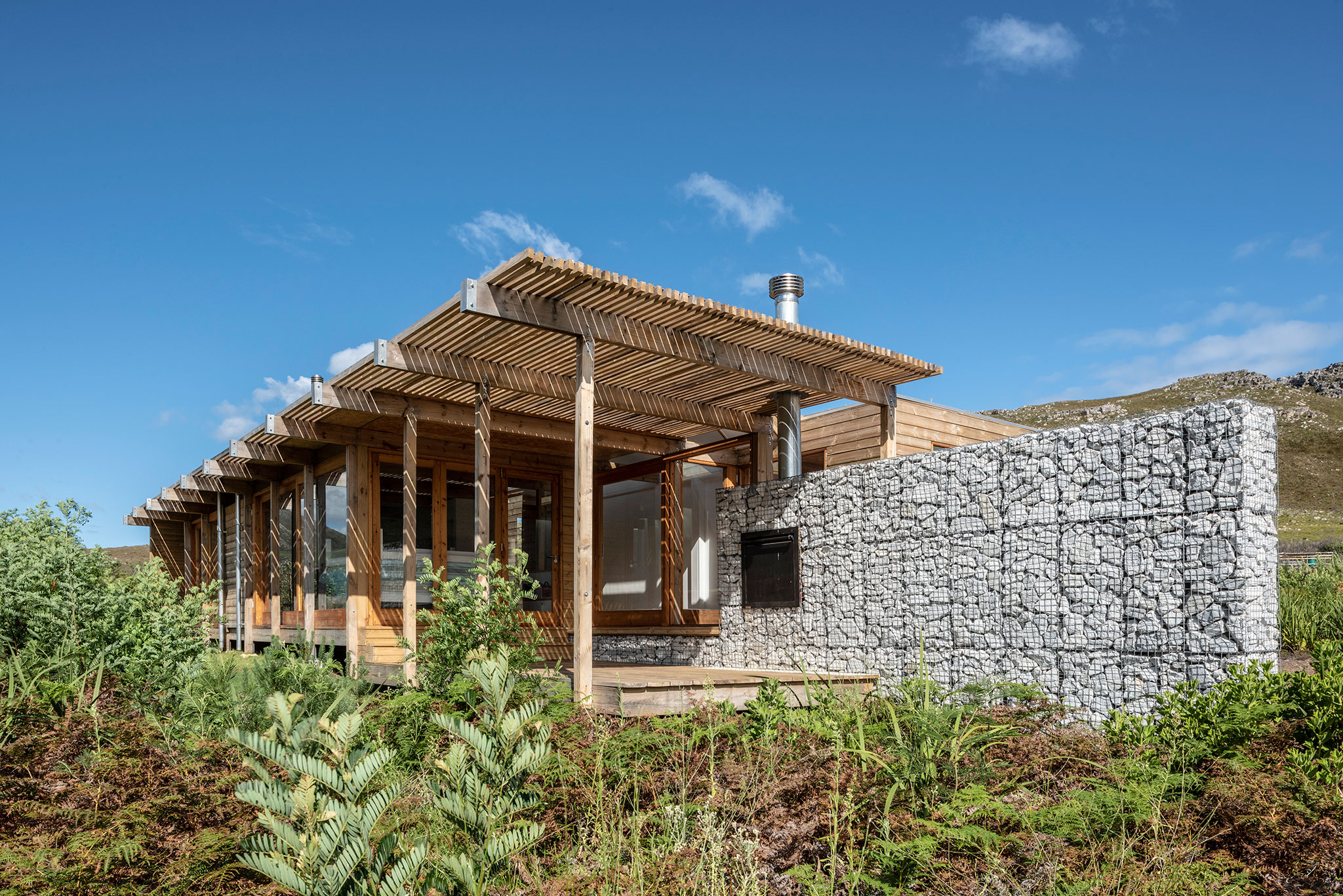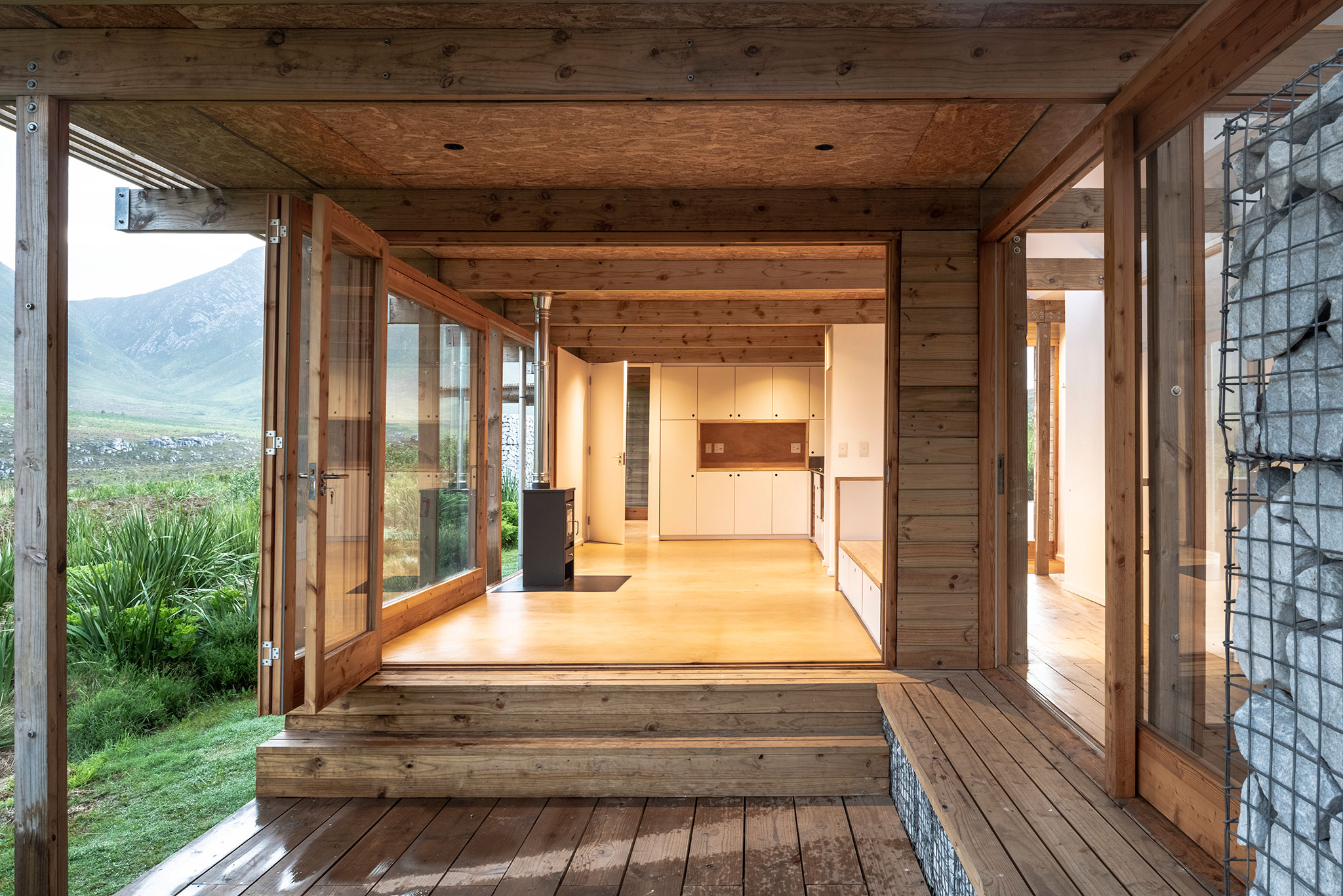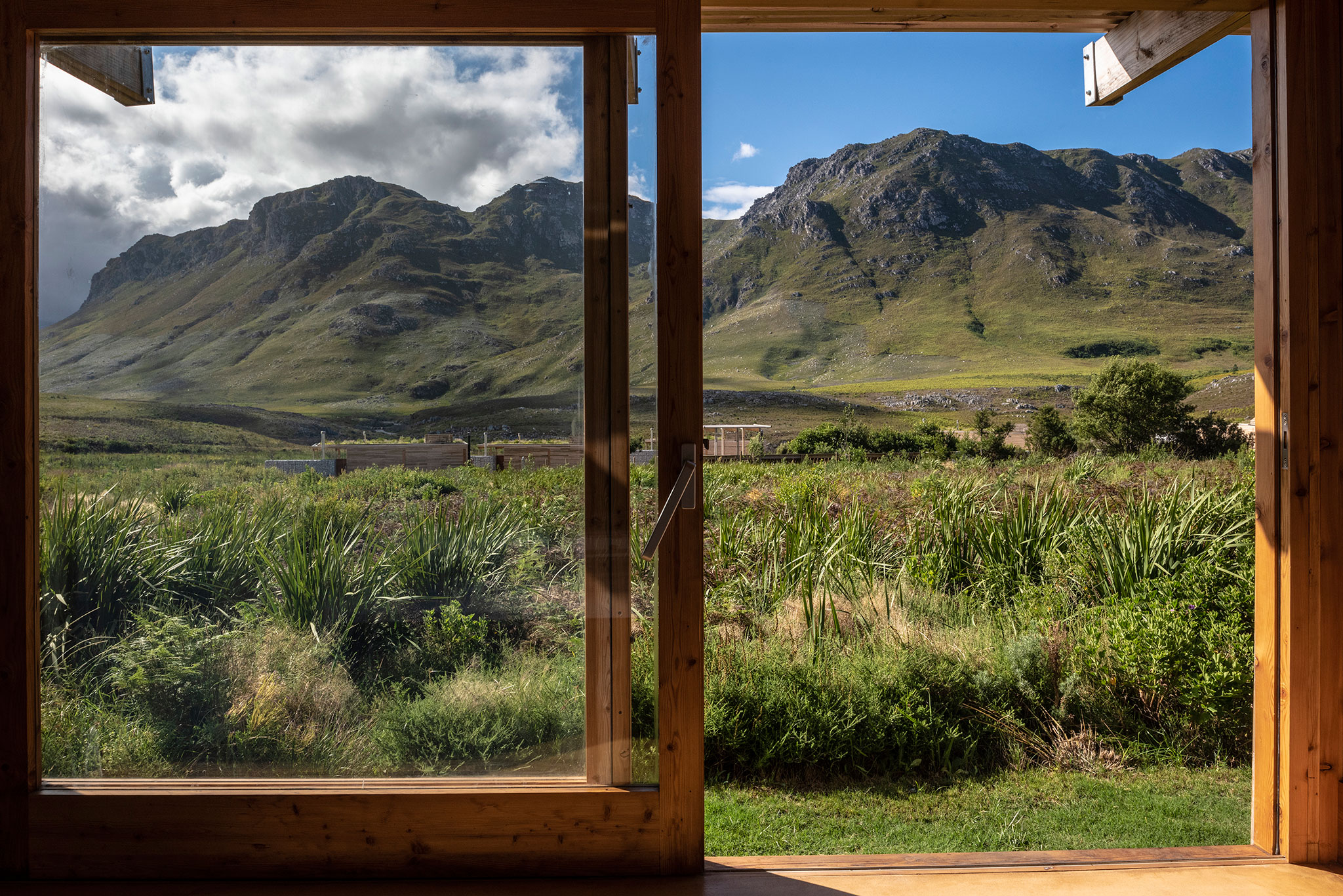The units are designed to respond to the weather and climate of the area, being built in pine wood for its availability and low impact on the environment. In addition, the cabins are elevated of the ground to allow wildlife to continue to thrive, and the incorporation of insulation panels and solar screens allow the interior temperature to be maintained while controlling the summer sun.

Kogelberg Cabins by KLG Architects. Photograph by Dave Southwood.
Description of project by KLG Architects
This project is located in the Kogelberg Nature Reserve on the southern stretch of the Kogelberg biosphere’s mountain range. The area is a renowned World Heritage Site and considered the heart of the Cape Floral Kingdom with its remarkable selection of fynbos and renosterveld, with a large percentage being critically endangered and endemic to the region.
Kogelberg Nature Reserve caters to the budding tourist industry of the Western Cape’s coastline and provides a tranquil escape just a couple of hours outside of Cape Town.
Vast valley’s, rolling mountains and indigenous fynbos vistas characterize the site. The project consists of a series of facilities which include an administrative building that accommodates the reserve’s environmental staff; a natural ecological swimming pool; a network of floating timber boardwalks, and tourist accommodation units – 5 x 2 person cabins, and 3 x 6 person cabins.

Kogelberg Cabins by KLG Architects. Photograph by Dave Southwood.
The design was initiated by carefully mapping out the area designated for construction by the EIA (Environmental Impact Assessment) to understand its topography, and vegetation. From this, small working areas were pegged out on site to locate the cabins in a way that minimized damage to fynbos and reduced the impact on the existing vegetation. Networks of floating boardwalks were similarly mapped to access the cabins and reduce the impact that visitors may have on the natural environment.
Pine was chosen as the most suitable building material because it is lightweight, readily available, and will fade to grey, blending into the landscape over time. The timber construction methodology allows the cabins to “float” over the fynbos. The foundations were restricted to small concrete pad foundations, which limits the impact on the ground conditions, and its environment. The raised cabins allow ground water, the local fauna, insects, and snakes uninterrupted routes under the cabins.
The units are designed to respond to the area’s weather and climate. Careful consideration of orientation allows for scenic views and wind protection alongside privacy from adjacent units.

Kogelberg Cabins by KLG Architects. Photograph by Dave Southwood.
High specification insulation panels in the walls, roof, and floor keep the units cool in summer and warm in winter. Timber slatted sun screens on the pergolas control the summer sun over the decks. Large gabion walls which house the built-in braais also provide cooling through thermal massing. Carefully chosen indigenous endemic grasses are planted on the roof in trays that allow easy maintenance. Additionally, the mass of the soil improves the thermal qualities of the roof.
As far as possible, off-grid technology was utilized. Water-less enviro-loos were incorporated in the design. This is a dry sanitation system which uses heat from the sun and whirly bird extraction to turn sewerage into compost without the use of water, chemicals, or electricity. Water is sourced from the nearby Palmiet River which will be treated at a new water purification plant. Full solar geysers were used throughout. Every unit has well positioned solid timber vents to maximise cross ventilation. The vents are 150mm wide, which means that they can remain open at all times without the risk of baboons entering the cabins.
These cabins are an example of how sustainable means of building practice can be used to inform and create a new design language for areas of pristine natural beauty – for areas in this instance where CapeNature have looked to increase revenue to offset costs of conservation in the region.
















































